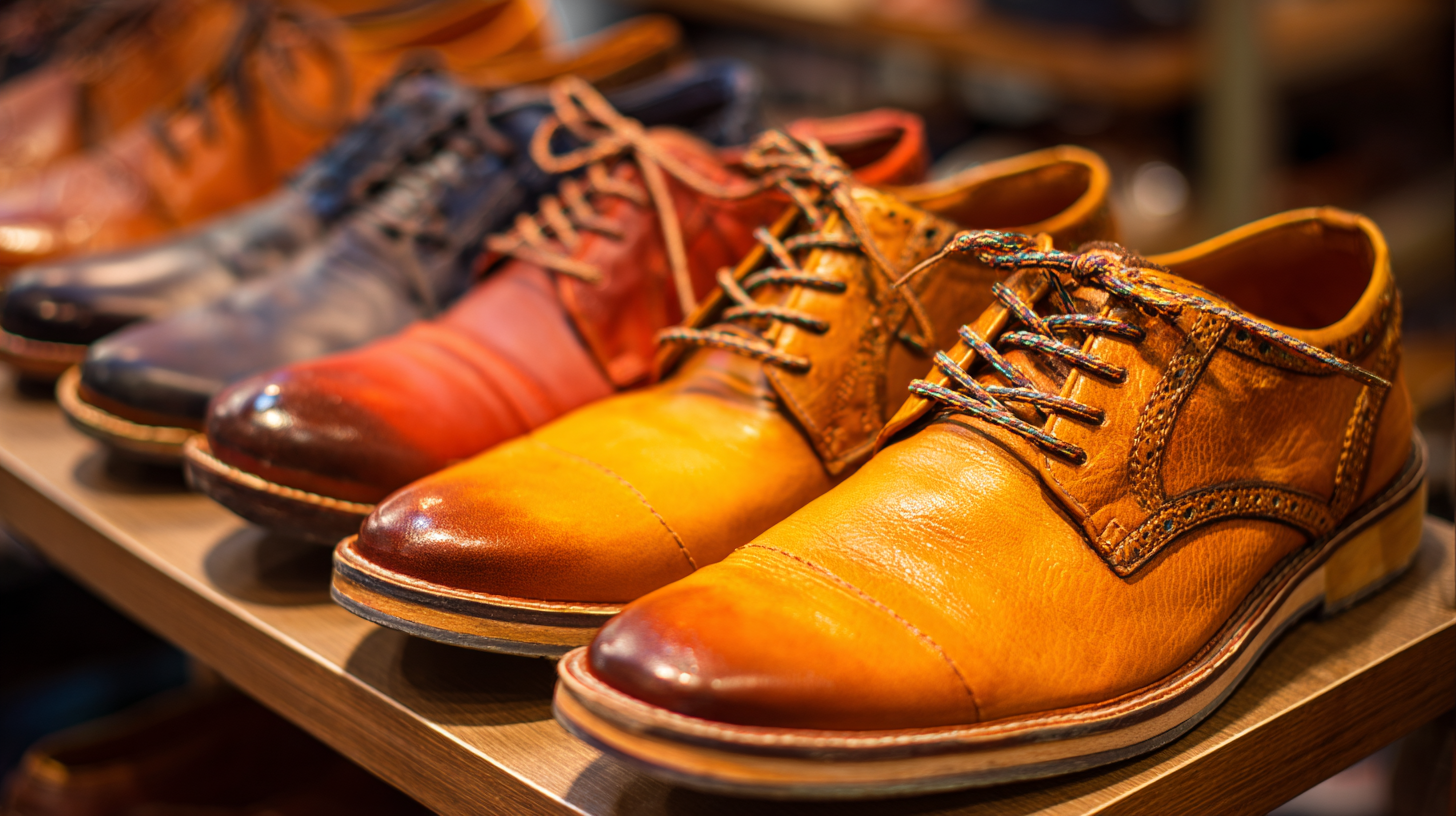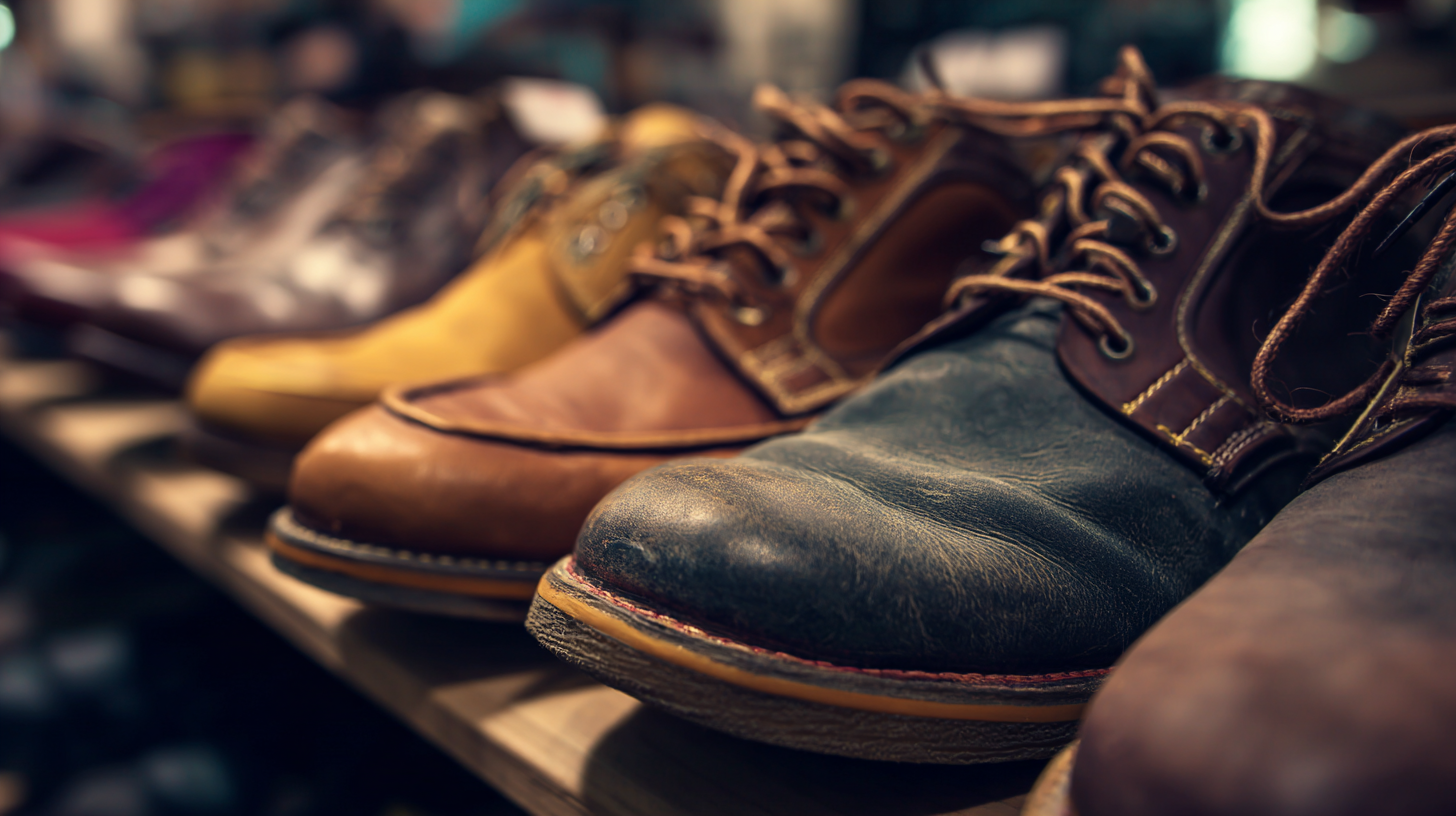
As the demand for Casual Shoes continues to soar globally, the industry is projected to reach an impressive market size of approximately $95 billion by 2025, according to recent market research reports. This growth is driven by shifting consumer preferences towards comfort and versatility in footwear, with millennials and Gen Z leading the charge. The increased engagement in e-commerce platforms and a surge in lifestyle brand offerings further fuel this expansion, as casual footwear becomes a staple in wardrobes around the world. As manufacturers strive to meet the expectations of quality and sustainability, staying ahead of industry trends and consumer insights becomes paramount for those in the casual shoe market. Emphasizing both craftsmanship and innovation will be crucial for establishing a leading global factory capable of delivering top-quality casual shoes exported to discerning customers across the globe.

When considering quality casual shoes for global export, there are several critical features buyers should examine. According to a recent report by Market Research Future, the global footwear market is projected to reach over $400 billion by 2027, highlighting the growing demand for quality products. The first feature to look for is premium materials. Shoes made from high-grade leather or breathable synthetic fabrics not only offer better comfort but also enhance durability, with reports suggesting that shoes made from natural materials can last up to 20% longer than those made from synthetics.
Another key feature is ergonomic design. Footwear that incorporates arch support and cushioning systems contributes significantly to user comfort, reducing fatigue during wear. A survey conducted by the Footwear Distributors and Retailers of America (FDRA) found that 75% of consumers prioritize comfort over other features when purchasing casual shoes. Additionally, the quality of stitching and construction is essential; reinforced seams and a reliable sole can increase the shoe’s longevity and performance. Ensuring these features are present is crucial for manufacturers looking to meet the expectations of an increasingly discerning global market.
| Feature | Description | Importance |
|---|---|---|
| Material Quality | The type of materials used impacts durability and comfort. | High |
| Comfort | Design and cushioning for all-day wear support. | Essential |
| Style Variety | Range of designs to cater to different markets and trends. | High |
| Export Compliance | Adherence to international manufacturing and safety standards. | Critical |
| Sustainability | Use of eco-friendly materials and processes. | Increasingly important |
When sourcing reliable shoe manufacturers globally, it is essential to consider several critical factors. According to a 2022 report by Statista, the global footwear market was valued at approximately $365 billion, projected to reach $500 billion by 2026. This growth presents lucrative opportunities for businesses, but also necessitates a careful approach in identifying trustworthy manufacturers. It's crucial to evaluate suppliers based on their production capabilities, quality certifications, and reputation within the industry.
One effective strategy for sourcing is to attend international trade shows, such as the Canton Fair or Global Sources Trade Show, where manufacturers showcase their products and innovations. Networking with other industry professionals can provide leads to reputable manufacturers while offering insights into best practices. Additionally, leveraging third-party inspection services can significantly mitigate risks associated with quality assurance, as highlighted in a 2023 report by Global Market Insights, which emphasized that 78% of companies experienced fewer quality-related issues when utilizing such services. By employing these strategies, businesses can secure partnerships with manufacturers that align with their quality standards and market demands.

In recent years, technology has profoundly transformed the production processes within the casual shoe industry, leading to significant improvements in efficiency and product quality. Advanced manufacturing techniques, such as 3D printing and computer-aided design (CAD), have streamlined the design phase, allowing brands to swiftly create prototypes and iterate on designs. This not only reduces time-to-market but also enables customization, catering to the diverse preferences of consumers around the globe.
Moreover, automation has taken center stage in the manufacturing process. Robotics and artificial intelligence are increasingly being employed to enhance precision and reduce human error in assembly lines. These innovations not only boost production capacity but also ensure consistent quality across batches of shoes. Additionally, data analytics offers insights into consumer trends, enabling manufacturers to adjust their production according to demand, minimizing waste and maximizing resource efficiency. As technology continues to reshape the landscape of casual shoe production, we can expect even more innovative solutions to emerge, setting new standards for quality and sustainability in the industry.
In today's competitive landscape, maintaining top-tier quality control in casual shoe exports is paramount for businesses aiming to thrive globally. As Vietnam embraces new opportunities in its export sector, particularly in footwear, adhering to stringent quality standards can set manufacturers apart. According to recent industry insights, the global footwear market is projected to reach a significant valuation of over $400 billion by 2027, highlighting the increasing demand for high-quality casual shoes.
To ensure quality control, manufacturers should implement best practices such as thorough testing of materials and final products. Engaging third-party testing and certification bodies can significantly enhance product safety and compliance, as noted in various industry reports. Furthermore, understanding the specific buyer requirements across different international markets is essential for success.
**Tips:** Always conduct pre-production meetings to address quality expectations. Regular audits during manufacturing can prevent non-conformance before it escalates. Additionally, fostering transparent communication with suppliers can improve overall product quality and minimize the risk of defects in the final output.
As the global footwear market continues to evolve, several trends are shaping the future of casual footwear, creating exciting opportunities for manufacturers and consumers alike. One notable movement is the increasing demand for PVC footwear, projected to expand from a market size of USD 59.2 billion in 2025 to an impressive USD 90.2 billion by 2035, growing at a CAGR of 4.3%. This surge is attributed to the versatile nature of PVC, making it an appealing choice for both casual and functional footwear.

Another significant trend is the rising popularity of comfort-driven designs, particularly in markets such as Korea, where fashion trends increasingly prioritize wearability. The shift toward slip-resistant shoes is also noteworthy; as workplace safety becomes paramount, consumers are seeking footwear that combines comfort with functional safety features. Additionally, the unique demand for luxury casual footwear among Indian women highlights a growing trend toward premium craftsmanship and fashionable design, underscoring that quality remains a crucial factor in consumer purchasing decisions across diverse markets.
